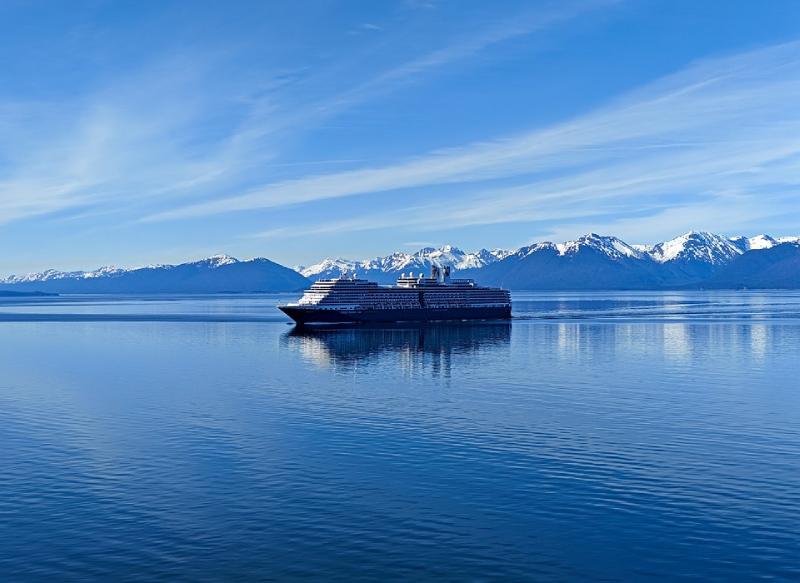From the stunning glaciers and rugged mountains to unique wildlife encounters, an Alaska cruise offers an experience unlike any other voyage. You might be curious about how much an Alaska cruise costs. The price will vary widely depending on the cruise line, the cruise length, the kind of room you choose, and the itinerary.
It’s important to remember that the initial price is just the beginning. You should also consider extra costs like transportation to and from the cruise, shore excursions, onboard spending, and gratuities. Additionally, the cost of cruising to Alaska can change depending on the season, with prices typically going up during the busiest travel times.
What Is the Average Cost of a Cruise to Alaska?
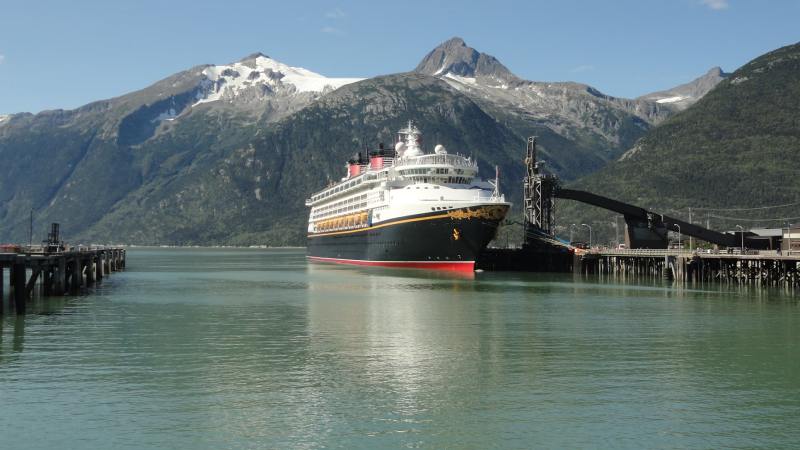
A week-long cruise to Alaska in an interior cabin, pre-gratuities, typically costs between $900 and $1,200 per person for mainstream cruise lines. Budget options may be available for under $800 during the shoulder season. The average price is roughly $1,000, but this can vary significantly depending on the cruise line, itinerary, and time of year.
This means adding extra days to your cruise, before or after sailing, to explore more on land. Alaska cruise tours are much more expensive than regular cruises, and will usually cost $2,000 to $5,000 per person.
Keep in mind that the prices mentioned are only starting prices. Unless you’re sailing on a luxury line, cruises are rarely all-inclusive. So, you’ll need to factor in additional costs for port fees, gratuities, onboard spending, transportation, and shore excursions.
Additionally, the prices mentioned are only for interior cabins. Alaska is known for its scenic landscapes, featuring majestic mountains and glaciers, so many passengers will upgrade their room to an oceanview or balcony. These upgrades can add hundreds of dollars to your overall price.
The Alaska cruise season, which runs from May through September, provides a narrower time frame for travelers to visit. This limited period contributes to a higher demand for Alaska cruises, often resulting in increased prices compared to other cruise destinations.
Cruises to Alaska are unique because they travel to more secluded and spectacular natural settings. This allows passengers to marvel at Alaska’s stunning natural environment, such as at the 500-mile long Inside Passage. The challenge of reaching these untouched areas and arranging excursions can also lead to higher overall costs compared to Caribbean or Mediterranean cruises.
Prices Differ Between Cruise Lines
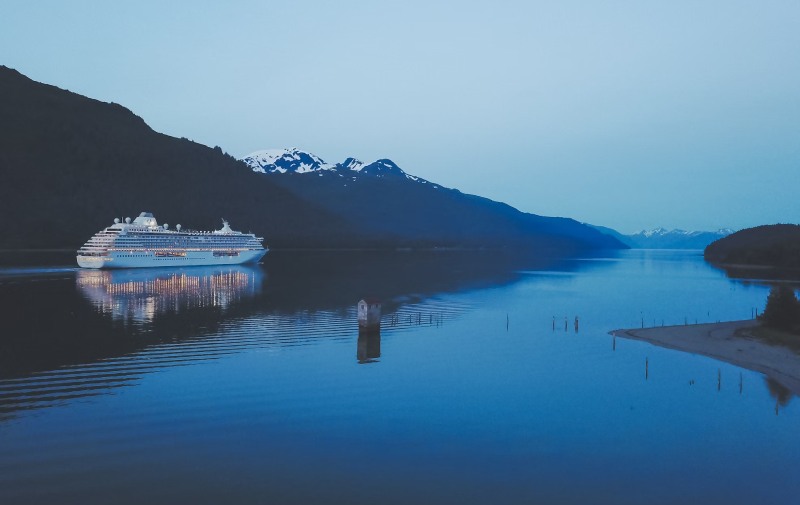
Mainstream, premium, and luxury cruise lines
Cruise lines can be grouped into three main categories: mainstream, premium, and luxury. Each category offers a unique mix of services, amenities, and consequently, comes with its own price range for an Alaska cruise.
Mainstream cruise lines, such as Royal Caribbean, Carnival Cruises, P&O, Holland America Line, and MSC, are among the most budget-friendly options for an Alaskan cruise. These lines cater to a wide range of travelers and are especially popular with families due to their kid-friendly activities. For a 7-day Alaskan cruise with these lines, prices typically fall between $125 and $175 per night.
Premium cruise lines like Princess Cruises, Cunard Line, Virgin Voyages, and Celebrity Cruises offer a more elevated experience with improved dining, service, and cabin comfort — but this comes at a higher price. For an Alaska cruise with these lines, expect to pay around $1,800 to $3,500 for a 7-day trip, which works out to roughly $257 to $500 per night.
At the top end of Alaska cruise options are luxury lines such as Silversea, Viking Cruises, Oceania Cruises, and Regent Seven Seas Cruises. These premium lines offer personalized service and exclusive amenities. For a typical 7-day Alaska cruise, you can expect to pay roughly $2,300 to $4,500 per person, averaging around $330 to $640 per night.
Choosing between a mainstream, premium, or luxury cruise line depends on your budget and the experience you’re seeking. Mainstream cruises are ideal for budget-conscious travelers, premium cruises offer enhanced dining and service for a moderate price increase, and luxury lines provide top-tier comfort and personalized experiences for those willing to splurge.
What does the cruise fare cover?
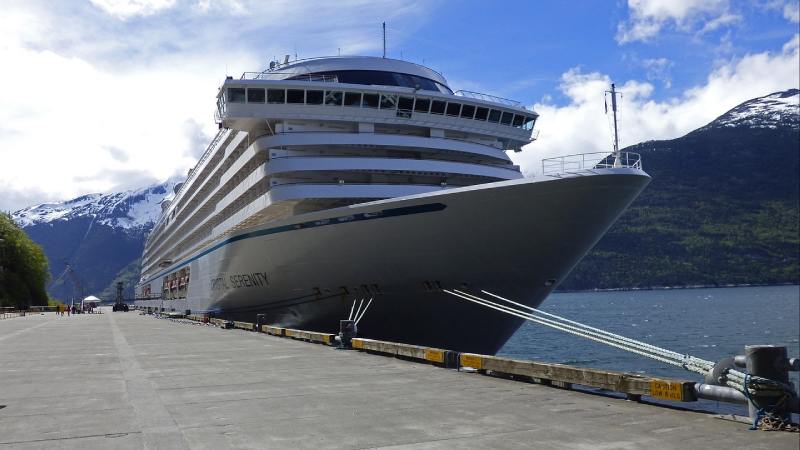
What’s covered in the cruise fare differs between cruise lines. Mainstream cruises often have lower upfront costs, but you’ll probably end up spending more on extras like drinks, internet, and shore excursions.
On the other hand, luxury cruise lines are typically all-inclusive, so the fare will cover gourmet meals, high-quality drinks, shore excursions, and gratuities within the initial payment. Although this significantly enhances the cruising experience, it will mean a higher upfront cost.
Factor in the cruise ship age
The age of the cruise ship can affect the price of the cruise. Modern ships, with the newest facilities and technology, often have higher prices. For example, a 6-day long Alaska cruise on Royal Caribbean’s Anthem of the Seas (launched in 2015) begins at $859. But, a similar trip on the Radiance of the Seas (launched in 2000) costs less, about $529.
Cabin Selection Impacts Pricing
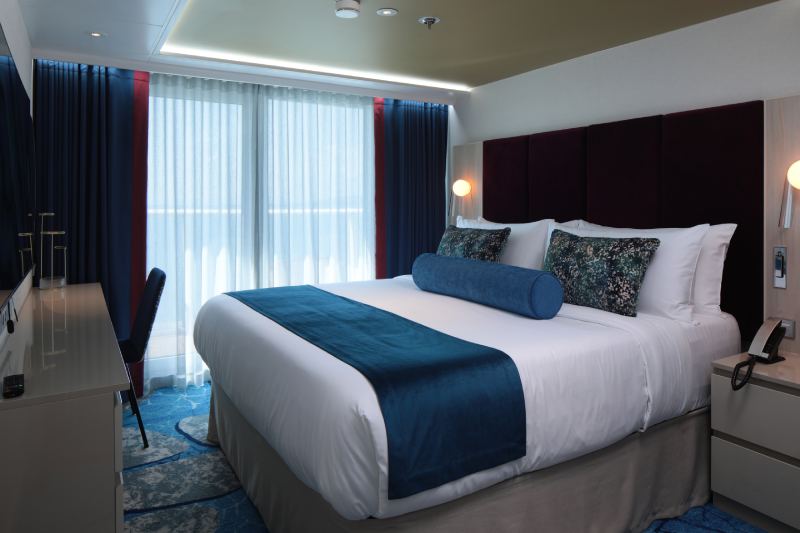
The price of your cruise is largely based on the type of cabin you choose. On a cruise ship, there are various room options ranging from interior cabins to oceanview cabins, rooms with balconies, and larger rooms known as suites that come with extra benefits. As you might expect, the more luxurious the room, the higher the cost. The most affordable options are the inside and ocean-view cabins, whereas the balcony cabins and suites are the most expensive.
Consider, for example, a 7-night Royal Caribbean Alaska Experience Cruise departing on September 5. Interior cabins start at $847, providing a cozy and affordable stay. Oceanview cabins begin at $1,083, while balcony cabins—a popular choice for Alaska—start at $1,207. For a more luxurious experience, Royal Suite Class accommodations start at $2,461, offering extra space and premium amenities.
The location of your room on the ship can also affect the cost. Rooms located on upper levels or in preferable locations, like the ship’s center, tend to be pricier. Consider what matters most to you during your cruise, such as comfort, views of the ocean, or additional amenities, and how much you’re willing to spend for those extras. While some might find it worth spending a little extra, others might not think the additional cost is justified.
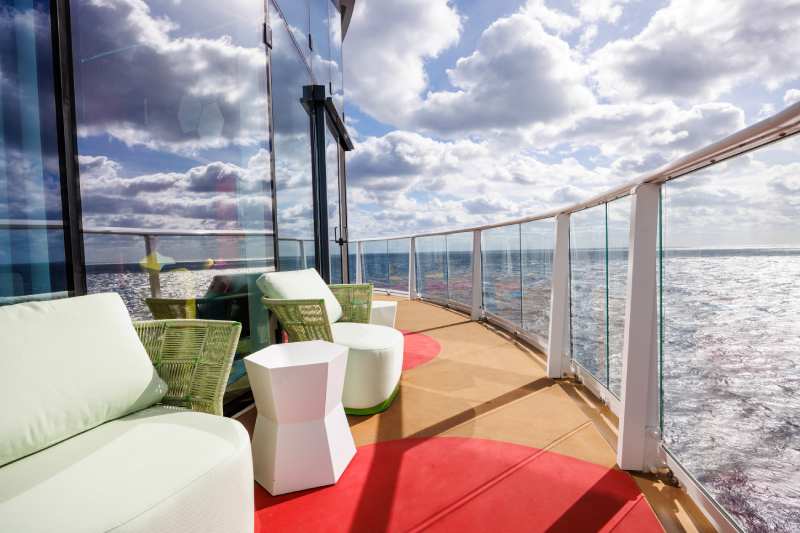
Alaska is famous for its stunning scenery, ranging from majestic mountains to vast, icy landscapes. Because of these breathtaking views, many believe it’s worth spending extra money to get a room with an ocean view or balcony. It’s quite different from Caribbean cruises, where most rooms overlook the plain ocean, so many don’t mind having an interior cabin.
For those traveling by themselves, it’s important to be aware of the single supplement fee. This fee is charged because the price of a cruise is usually based on two people sharing a room. When a room is occupied by just one person, the cruise line doesn’t earn the money it would from a second occupant. To compensate, they charge a single supplement fee.
This fee can be as much as 80% to 100% of the room’s rate, meaning solo travelers could end up paying nearly the same as two people for the same room. Some cruise lines offer discounts or promotions that reduce this fee, so it’s worth looking for deals if you’re planning to cruise alone.
Factor in Transportation

When planning your cruise budget, it’s important to factor in transportation costs. Driving to a nearby port can save you a lot compared to buying plane tickets and paying for other travel costs. But remember, driving has its own expenses, like gas and parking fees at the port, so make sure to include those in your calculations.
If you’re planning to fly to the cruise port, keep in mind that ticket prices can vary widely. Cruises to Alaska typically depart from cities like Seattle, Vancouver, Seward, Whittier, and Juneau, as well as from cities in California like San Francisco and Los Angeles.
Let’s take Seattle as an example, since it’s one of the most popular departure ports for Alaska cruises. For Americans, a flight to Seattle can range from $400 to $600, while international travelers may face higher costs.
Upon arrival, you’ll need to figure out how to reach the cruise terminal from the airport. Options include shuttles, taxis, or services like Uber, each with different price points. For example, a shuttle from the Seattle airport to the port generally costs around $30, whereas a taxi ride might run closer to $50, and an Uber is around $60.
It’s a good idea to arrive in the departure port at least a day before your cruise to avoid any travel problems. So, you’ll need to add the cost of staying overnight in a hotel to your budget. A decent hotel in Seattle might set you back around $200 for a night. Overall, expect to spend somewhere between $500 to $900 on travel and accommodation before your Alaska cruise begins.
Factor in Onboard Expenses to the Cost
Drink packages

A common extra expense comes from drink packages. These packages vary in price and offerings, ranging from soda plans to more expensive options that include alcoholic drinks. It’s important to note that some cruise lines, such as Royal Caribbean, require all adults in the same cabin to purchase a drink package to prevent sharing.
Alcoholic drink packages typically cost between $50 to $75 per day and come with a limit of around 15 drinks daily. On the other hand, soda plans are more budget-friendly, usually priced at about $10 to $15 per day. If you’re looking to save money, bringing your own beverages onboard could be an option, although some cruise lines like NCL may have restrictions or not allow it altogether.
Specialty restaurants

During your cruise, you’ll discover various dining spots onboard, including specialty restaurants that offer a more upscale dining experience than the main dining rooms, but at an additional cost.
While cruising with Royal Caribbean, apart from the main dining area, you can enjoy diverse cuisines at specialty restaurants for an extra fee, depending on the ship. These eateries, such as “Chops Grille” known for its delicious steaks and seafood, “Giovanni’s Table” serving authentic Italian dishes, and “Izumi” offering fresh sushi and Japanese cuisine, provide a quieter and more exclusive setting.
Onboard activities and entertainment
Although your cruise fare covers many enjoyable activities and entertainment options, certain special activities will require an additional fee. These could include wine tastings, cooking classes, distinctive attractions like Royal Caribbean’s FlowRider, or exclusive behind-the-scenes tours. Expect these special onboard activities to range from $20 to $100 per person.
Gratuities
Gratuities are an additional expense to keep in mind when budgeting for your cruise. Most cruise lines automatically add a daily service charge to your onboard account, which goes toward tipping crew members who provide services such as dining, housekeeping, and general guest support.
These charges typically range from $16 to $20 per person per day for standard staterooms, while guests staying in suites or premium accommodations may pay $21 to $27 per person per day. Also, many cruise lines apply an 18% gratuity to purchases like bar drinks, specialty dining, and spa services.
Internet packages

In today’s world, everyone wants to stay connected, even while on a cruise to Alaska. Royal Caribbean offers internet access through their VOOM package, which costs around $20 per day. Carnival provides internet packages starting at $13 per day, with faster options available for about $21. The price may fluctuate based on the number of users, connected devices, and data usage. Additionally, anticipate that the internet speed might be slower compared to what you’re used to at home.
Factor in Alaska Shore Excursion Costs
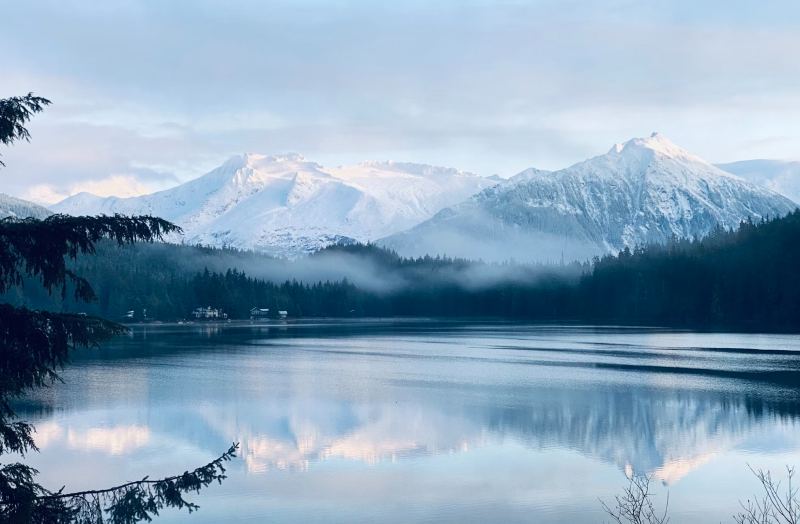
Cruises to Alaska are particularly excursion-centric due to the region’s unique natural landscapes, wildlife, and cultural experiences that are found nowhere else. Shore excursions range from exploring vast glaciers and wildlife tours to kayaking through serene fjords and scenic bays.
Keep in mind that shore excursions in Alaska are generally quite expensive. This is because Alaska’s wild and tough terrain often requires special gear, smaller groups for protecting the environment and safety, and sometimes small plane or helicopter rides to get to the most hidden and stunning spots.
In Juneau, popular excursions include the Mendenhall Glacier helicopter tours, which can cost around $400 to $800 per person, and whale watching tours, which are generally in the range of $150 to $300 per person.
Another popular excursion is the Mount Roberts Tramway, which offers stunning views of the Gastineau Channel and surrounding mountains, with adult tickets typically ranging from $50 to $60. For those interested in cultural experiences, the Alaska State Museum offers insights into the region’s history and art for about $14 to $20 per person.

Glacier Bay National Park is another popular excursion located west of Juneau, Alaska. This secluded paradise, known for its majestic glaciers and vibrant wildlife, offers an unforgettable experience. However, its remote location means it can only be reached by either plane or boat.
Once there, visitors are treated to a breathtaking spectacle of towering glaciers, including the famous Margerie Glacier, which dramatically calves icebergs into the sea. The park is also home to a diverse array of wildlife, from humpback whales and seals in the waters to bears and eagles on land.
While entrance to the park is free, transportation costs should be taken into account. A ferry ride from Juneau to Gustavus, the park’s main access point, will cost around $70 for an adult. Opting for a flight (round-trip) from Juneau to Gustavus will cost around $250 per person. A day-long boat tour, taking you around the glaciers, will cost around $280 per person.
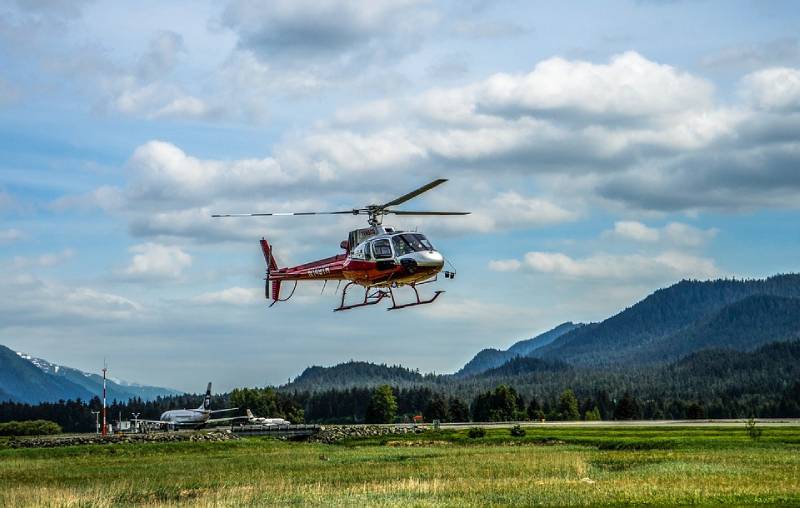
In Whittier, a gateway to the mesmerizing Prince William Sound, shore excursions focus on the area’s stunning natural beauty and abundant marine life. Notably, the Phillips 26 Glacier Cruise offers an extensive day trip that allows passengers to witness the majesty of 26 named glaciers in a single journey, priced at around $200 for an adult. This excursion provides breathtaking views and opportunities to see glaciers calving, a natural phenomenon where chunks of ice break off and crash into the water.
Seward, located at the gateway to Kenai Fjords National Park, offers exceptional shore excursions that showcase Alaska’s stunning wilderness and wildlife. A popular option is the Kenai Fjords National Park Cruise, which navigates the park’s rugged coastline, providing close encounters with glaciers, whales, sea lions, and puffins.
Expect to pay around $275 for a 4-hour cruise or about $500 for a longer 7.5-hour excursion. For those seeking more adventure, a helicopter tour to Godwin Glacier for a dog sledding experience is available for about $599 per adult.

Sitka, Alaska, offers a variety of shore excursions that showcase its natural beauty and wildlife. One of the top attractions is the Sitka National Historical Park, providing insights into the area’s native Tlingit culture through totem poles and historical sites. Wildlife enthusiasts can embark on marine wildlife tours, priced around $250 to $300 per person, to spot orcas, sea otters, and eagles.
For those interested in fishing, half-day charter fishing trips are available, typically costing around $375 to $475 per person, depending on the operator. The Fortress of the Bear, a sanctuary for orphaned bears, allows visitors to observe these majestic animals up close, with adult tickets priced at around $15.
In conclusion, while shore excursions in Alaska can significantly increase the overall cost of your cruise, the breathtaking natural landscapes and intriguing wildlife make it a worthwhile expense for many.
Make sure to budget wisely for these excursions if you’re considering an Alaskan cruise, as they frequently become the trip’s most memorable aspects. Compared to cruises to the Caribbean, you might find it worthwhile to allocate a larger portion of your budget to shore excursions.
One-Way vs. Round Trip Alaska Cruises
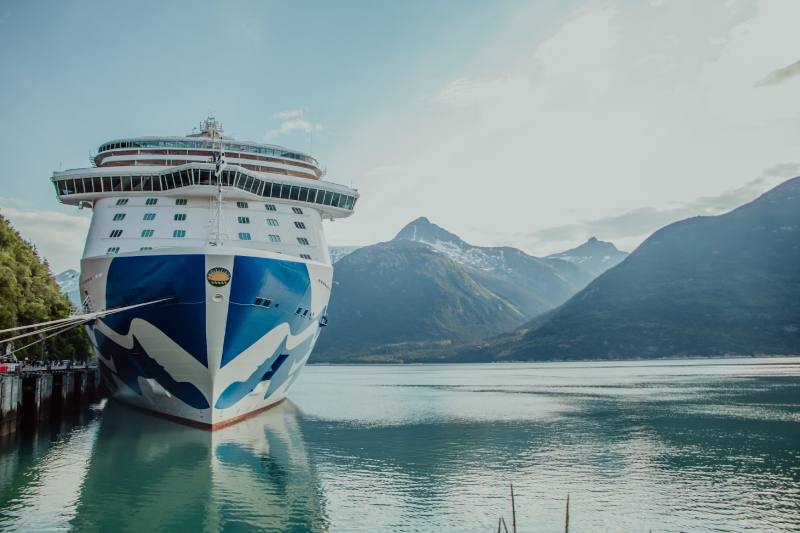
When planning an Alaska cruise, you have the choice between embarking on a one-way journey or opting for a roundtrip voyage. One-way cruises typically start from one port, often Vancouver or Seattle, and finish at a different port, such as Whittier or Juneau. On the other hand, roundtrip cruises will set sail from and return to the same port.
In terms of pricing, one-way cruises usually offer lower initial fares compared to roundtrip cruises. However, it’s important to consider that flights back from your end point on a one-way cruise might increase your overall travel costs. So, one-way cruises might only be cheaper if you live near Alaska or if you find a particularly good deal on return flights.
One-way cruises usually sail southbound from Seward or Whittier in Alaska or northbound from Vancouver or Seattle. One of the major advantages of beginning or ending your cruise in Alaska is the chance to extend your trip into the interior of the state, offering a deeper exploration beyond the coastal areas seen during the cruise.
Booking Time Affects the Cost
Book early to save money

Booking your Alaska cruise early, ideally 6-12 months before it starts, can often save you money. Cruise lines tend to lower their prices ahead of time to make sure they fill up the rooms well before the trip. This way, they encourage early bookings by offering discounts. By booking in advance, you can save on costs and have a wider selection of rooms and locations on the ship.
Book last-minute to save money
If you’re flexible with your travel plans, you can often save money by booking your Alaska cruise close to the departure date. When the time to sail gets closer and cruise lines want to fill up any remaining rooms, they may reduce their prices. However, keep in mind that while last-minute bookings can be cheaper, they typically offer a limited choice of rooms. So, you might find yourself in a less desirable location on the ship.
Cruise ship ticket prices increase over time
Typically, cruise fares tend to go up as the departure date approaches. This is due to the concept of supply and demand; as more rooms are reserved and fewer remain, the cost goes up. Waiting too long in hopes of a price drop could mean paying more or missing out completely if the cruise sells out. To avoid these price hikes, it’s best to book your Alaska cruise either well in advance or right before it sets sail.
Season Affects the Cost

The cost of a cruise to Alaska can vary significantly throughout its short cruise season, which lasts from May through September. Alaska’s cruise season is so short since the rest of the year is too cold and dark for comfortable cruising.
The season peaks in July and August, thanks to the warmer temperatures and longer, sunnier days. If you’re looking to potentially save on costs, consider cruising during the shoulder seasons of April–May and September–October.
Deciding when to take an Alaska cruise won’t just affect the price, but also what you’ll see and experience. The landscape, wildlife, and plants will look different from season to season. The early season (April to June) tends to be cheaper, with cooler weather and fewer people, making it a good choice if you’re okay with the colder spring and want to save money.
The warmest months, July and August, are perfect for family trips since kids are on school break and it’s summer, which increases demand and prices. In September and October, cooler weather and the start of school mean fewer crowds and often lower prices.
Keep in Mind Special Offers and Discounts
Discounts for kids

Families can cut costs by taking advantage of special offers for kids. Often, kids can sail for free. For instance, MSC Cruises often runs promotions allowing children under 18 to sail at no cost when staying in a cabin with two paying adults.
Likewise, NCL occasionally offers promotions where kids sail for free as part of their “Free at Sea” deals, making family vacations more affordable. These offers can vary based on the cruise and availability, so checking with the cruise company or consulting a travel agent for the latest deals is recommended.
Loyalty programs offer frequent discounts
Signing up for loyalty programs from cruise lines, such as Royal Caribbean’s Crown & Anchor Society or Carnival’s VIFP Club, is smart for regular cruise-goers. Membership in these programs can give you price reductions, onboard credit, and extra perks as you climb the ranks, helping you cut costs over the long run.
Special discounts for military, seniors, and police officers
Many cruise lines provide price reductions for various groups, such as those in the military, seniors, teachers, and emergency service workers. It’s a good idea to ask about these discounts when arranging your cruise, as they can lead to significant cost reductions.
For instance, Royal Caribbean offers price discounts for seniors (aged 55 and above), police, firefighters, and military personnel on certain cruises. Carnival gives similar discounts for seniors (aged 55 and above) and military personnel. Additionally, Princess Cruises has special offers for teachers, military personnel, and emergency/medical staff.
Ways to Save on an Alaska Cruise
Keep your eyes out for discounts and special offers

To reduce the price of an Alaska cruise, it’s smart to look out for special offers and discounts. Cruise lines often have sales that can significantly reduce the cost of your trip. These specials could be last-minute deals, lower prices during off-peak times, or combo deals that include things like food, excursions, or extra onboard credit at a lower cost than if you purchased them separately.
Another easy way to cut costs on a cruise is to keep track of fare changes. The price of cruises can vary based on demand, the time of year, and ongoing promotions, so grabbing a ticket when the price drops can help make your cruise more budget-friendly. To stay updated on these price changes, you can use tools and websites (such as CruisePlum) that monitor cruise prices and notify you when there’s a drop in the price of a cruise you’re looking at.
Use a travel agent

Booking your cruise to Alaska with a travel agent can be a smart move if you want to keep some extra money in your pocket. Travel agents often have access to exclusive deals, promotions, and prices that aren’t typically available to the public. They maintain good relationships with cruise lines, which means they often learn about discounts, limited-time offers, and potential upgrades before the general public does.
A skilled travel agent offers more benefits than just helping you save money. They can assist you in choosing the right cruise line, ship, and itinerary that matches your preferences and budget, making sure you get the most for your money.
They’re also great at helping you navigate through the various options you’ll encounter, such as selecting a cabin, choosing meal plans, and organizing activities while on land. This can prevent you from overspending or making choices you might later wish you hadn’t.
Limit the amount of onboard spending
Pre-purchase packages: Before your cruise starts, you can buy drink, meal, and Wi-Fi bundles ahead of time for a cheaper price than if you wait to buy them on the ship.
Take Royal Caribbean’s drink packages, for example. They have three types: a Soda Package, a Refreshment Package, and a Deluxe Drink Package that includes alcohol. They also have a photo package you can get instead of paying for pictures one by one while you’re on the cruise.

Maintain a daily spending limit: With all the fun and activities on a cruise, it’s easy to spend more than intended. To prevent overspending, decide on a daily spending amount and follow through with it.
Most cruise ships have apps or kiosks on the ship that let you see how much you’re spending as it happens. Use these to watch your spending closely. If you’re on the cruise with your family, talk about the spending limit with everyone to make sure you all agree.
Set a budget
Setting a budget for your Alaska cruise can help you avoid unexpected expenses and make your vacation more enjoyable. To avoid unexpected surprises, consider all potential costs, including expenses before the cruise (such as airfare and hotel stays), the cost of the cruise itself (covering taxes and fees), spending on the ship, shore excursions, and extra costs like travel insurance. Here is an easy plan to follow:
Pre-cruise expenses (10% of total budget): Pre-cruise costs include flights or other transportation to the port, potentially a hotel stay if you’re arriving at the port city a day early, and any special gear or luggage you might need for the trip.
Base cruise fare (30% of total budget): The base cruise fare is your ticket to experiencing the breathtaking beauty of Alaska from the comfort of the cruise ship. This fare typically covers your accommodation, most meals, and basic onboard activities and entertainment.
Onboard spending (15% of total budget): Once aboard, you’ll find various opportunities to enhance your experience, including specialty dining, spa services, beverage packages, internet access, and gratuities for the crew. These services are not included in the base fare and require extra budgeting.
Shore excursions (35% of total budget): Shore excursions in Alaska are a must for a full experience, offering chances to explore glaciers, engage in wildlife viewing, and immerse yourself in the local culture.
Additional expenses (10% of total budget): Finally, setting aside about 10% of your budget for additional expenses such as souvenirs, shopping, travel insurance, and any unexpected costs can provide a financial cushion. This ensures you’re prepared for anything and can make purchases or cover any unforeseen expenses without stress.
Picking an interior cabin can save you money
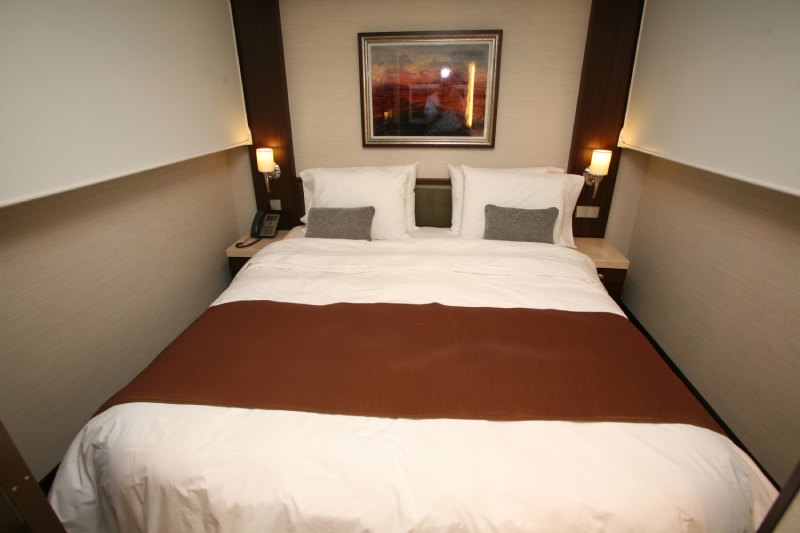
Picking an interior cabin inside the ship is an easy way to reduce spending on a cruise. These rooms are tucked away in the corridors without windows to the outside, making them the most affordable choice. Even though you won’t wake up to Alaskan views, you’ll be able to allocate more funds to different parts of your trip, such as shore excursions or onboard spending.
Take Royal Caribbean’s 7-night Alaska Adventure Cruise as an example: an interior cabin costs $772, whereas one with a view of the ocean is $1,032, one with its own balcony is $1,441, and a suite is priced at $3,427. Opting for an inside room can lead to savings of over $669 when compared to a balcony room, giving you a significant portion of your budget to enjoy elsewhere on your cruise.
Alaska Cruise Tours Are More Expensive
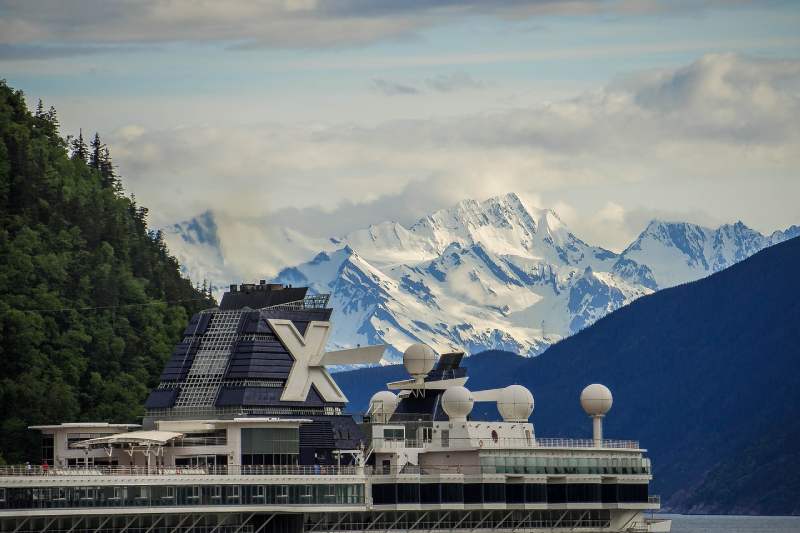
An Alaska cruise tour is a unique experience that combines a traditional cruise along the state’s stunning coastline with a land tour exploring its interior. Unlike a regular Alaska cruise, which primarily sails through the beautiful passages and by the breathtaking glaciers, a cruise tour extends the adventure by taking travelers off the ship and deeper into Alaska.
This part of the trip allows guests to explore more of the state’s rugged landscapes, wildlife, and iconic destinations, such as Denali National Park and Preserve, through train rides, bus tours, and stays in lodges.
Alaska cruise tours tend to be more expensive than regular cruises, often ranging in price from $2,000 to $5,000. This is because they include the cost of shore excursions in the overall price. This means that when you pay for your cruise, you’re also paying for the guided tours, nature hikes, and other activities that you’ll participate in either before or after the cruise. Additionally, cruise tours to Alaska often last longer than a typical cruise, which also increases the overall price.
Read More: Alaska Cruise Mistakes: Lessons Learned from Experienced Cruisers
What Is the Average Cost of a Cruise to Alaska? – FAQ
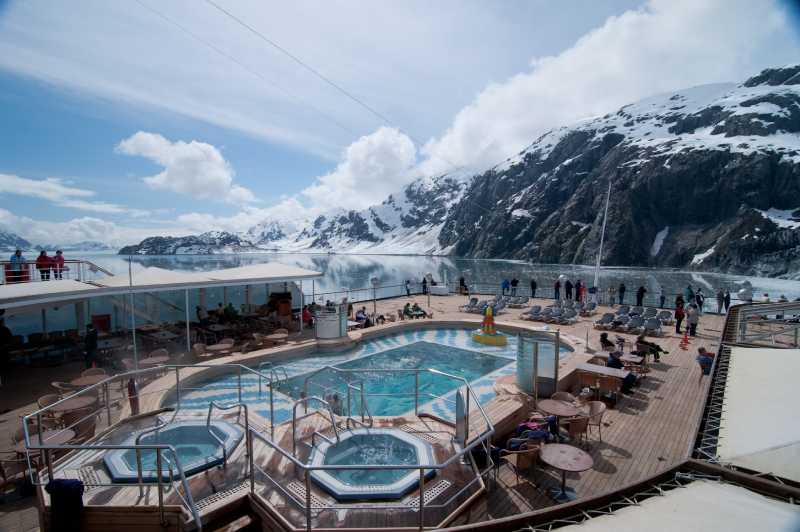
What is the average cost of a 7 day Alaska cruise?
On average, a 7-day Alaska cruise in an interior cabin, before gratuities, typically costs between $900 and $1,200 per person with mainstream cruise lines. Budget options can sometimes be found for under $800 during the shoulder season, while the average price is around $1,000. Prices can vary significantly based on the cruise line, itinerary, and travel dates.
What is the cheapest time to cruise to Alaska?
The cheapest time to cruise to Alaska is during the shoulder season, which lasts from April through May and September through October. During these months, you’ll often find lower prices compared to the peak summer months. This is because the demand is lower, mainly due to the cooler weather and because school is in session.
How far in advance should I book an Alaska cruise?
To get the best deals on your Alaska cruise, it’s a good idea to book at least six to 12 months in advance. Planning early gives you more options for cabins and itineraries, and sometimes you can catch early booking discounts. However, if you’re flexible with your travel dates and cabin choice, you might also find last-minute deals near departure.
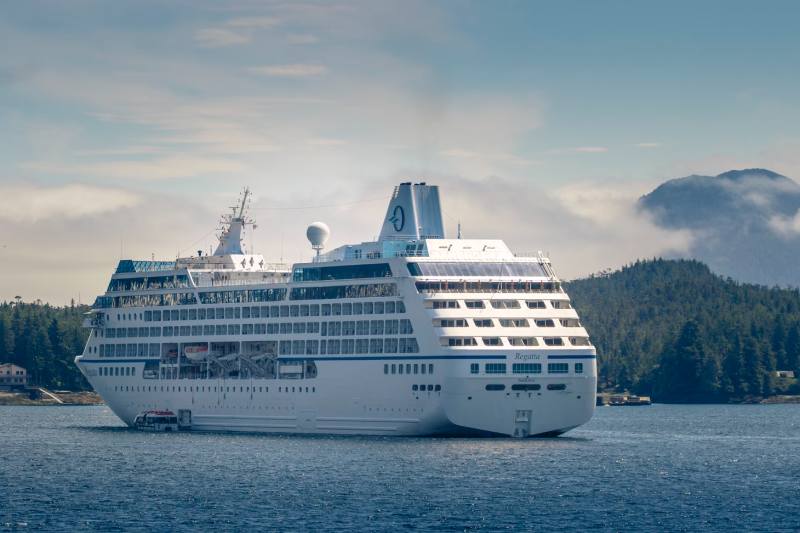
What is the most expensive time for an Alaska cruise?
The most expensive time for an Alaska cruise is during the months of July and August. This is because of the warmer weather and extended daylight hours, which attract the most travelers.
Do I need a passport for a cruise to Alaska?
If you’re a U.S. citizen taking a cruise that starts and ends in the same U.S. port and travels to Alaska, you might not need a passport. These types of cruises, often referred to as “closed-loop” cruises, generally require passengers to have government-issued photo identification (like a driver’s license) and proof of citizenship (such as a birth certificate) instead of a passport.
However, if your cruise includes stops in Canada or other foreign ports, or if you’re flying into Canada to board your cruise ship, you will need a passport. It’s also worth noting that having a passport is recommended even for closed-loop cruises. This is because if you need to fly back to the U.S. from a foreign port due to an emergency, a passport would be required for re-entry.
How much money does the average person spend on an Alaska cruise?
The amount you spend on an Alaska cruise can vary quite a bit depending on your choices, but a good estimate for the average person is around $2,000 to $4,000 per person for a week-long trip. This typically includes the base fare, which can range from $800 to $1,500 for a standard cabin, plus extras like gratuities, shore excursions, and onboard spending.
Gratuities often add about $15 to $20 per person per day, while excursions in Alaska — known for activities like glacier tours and wildlife spotting — can cost anywhere from $100 to $300 per outing. Onboard expenses like specialty dining, drinks, and souvenirs can also add up quickly, so it’s smart to budget a few hundred dollars extra for those.
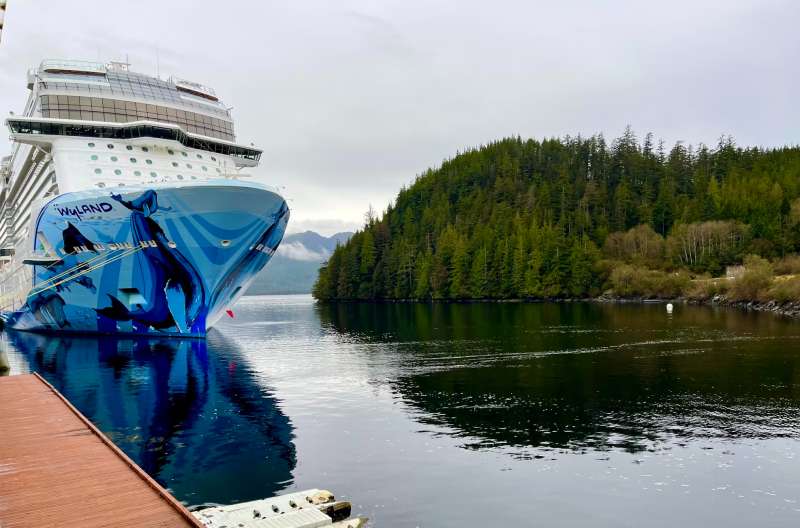
Final Words
The cost of an Alaska cruise can vary significantly depending on factors like the cruise line, your cabin choice, and how much you spend onboard. On mainstream cruise lines, you can expect to pay around $150 per night for a standard cabin, which typically comes to about $850 per person for a week-long cruise. After factoring in gratuities, excursions, and onboard spending, the total cost for most travelers typically falls between $1,500 and $2,500 per person for a standard cabin on a mainstream line.
If you choose a cruise tour — which combines a traditional cruise with guided land tours — the total cost can range from $2,000 to $5,000 per person. Don’t forget to factor in additional expenses like gratuities, which often add $15 to $20 per person per day, as well as shore excursions and onboard spending, which can quickly add up depending on your choices.
Remember, these prices are just a starting point for interior rooms. Extra charges, such as tips, port fees, taxes, and any additional activities or services like Wi-Fi, will increase your total cost. It’s a good idea to include these in your budget early to prevent any surprises.
Related Articles:

